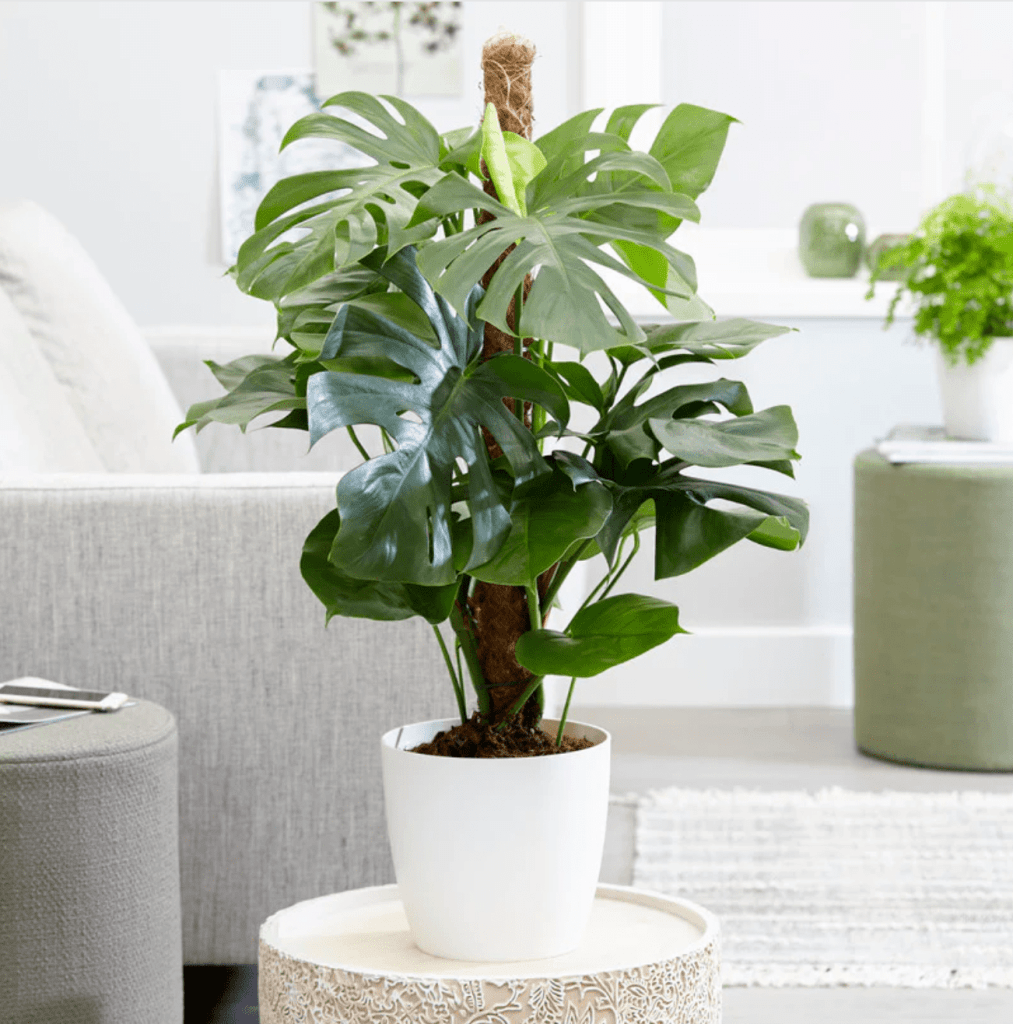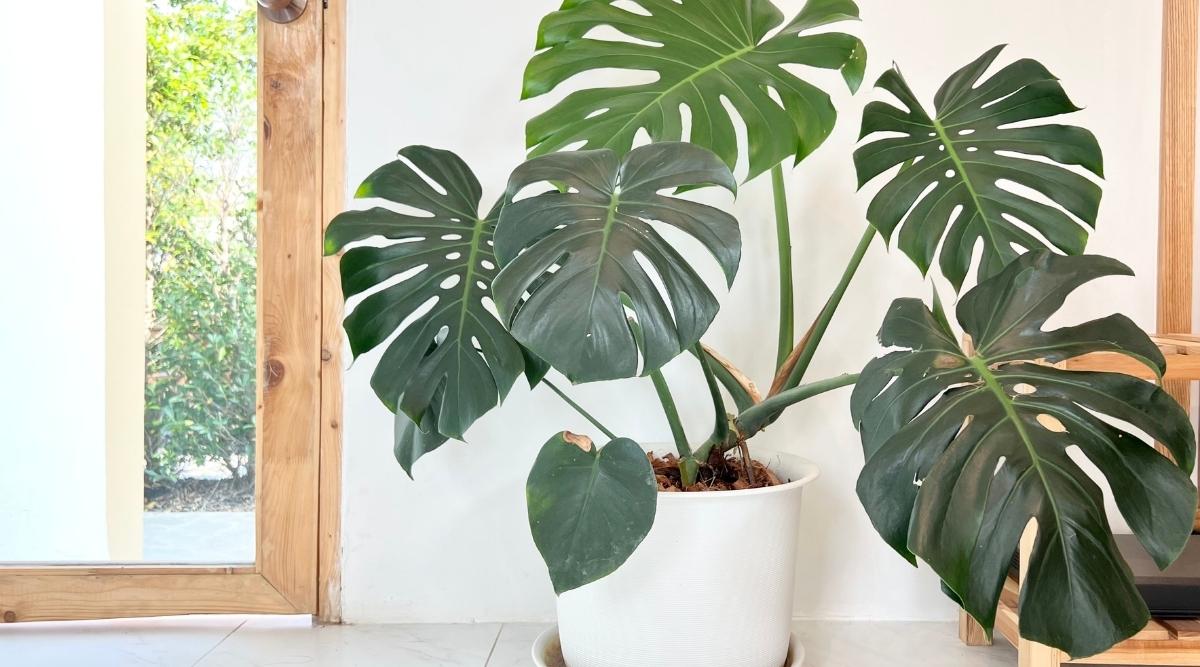Where is the best place in house for a Swiss cheese plant?
If you're looking to add some greenery to your home, a Swiss cheese plant (also known as Monstera deliciosa) is a great choice. These stunning plants are known for their large, glossy leaves that are perforated with holes - hence the nickname "Swiss cheese plant." Not only are they visually appealing, but they also have a number of benefits as houseplants. They can help purify the air, increase humidity levels, and even reduce stress and anxiety.
However, like all plants, Swiss cheese plants have specific care requirements to thrive. One of the most important factors to consider is where you should place your plant in your home. In this article, we'll explore the best locations for a Swiss cheese plant and provide tips for maintaining it.
When it comes to choosing a location for your Swiss cheese plant, there are a few key factors to consider.
-
Light Levels:
Swiss cheese plants prefer bright, indirect light. They can tolerate some direct sun, but too much direct sun can cause the leaves to yellow or burn. If you're placing your plant near a window, make sure it's not directly in the path of the sun's rays. A south or east-facing window is generally a good choice, as it will provide bright indirect light without being too harsh.
-
Temperature:
Swiss cheese plants prefer a moderate temperature range of 60-80°F. They can tolerate some fluctuation, but it's best to keep them away from drafts and hot spots. Avoid placing your plant near vents, doors, or windows that may expose it to temperature fluctuations.
-
Humidity:
Swiss cheese plants prefer higher humidity levels, as they are native to humid rainforests in Central and South America. If the air in your home is particularly dry, you may need to increase the humidity around your plant. One way to do this is by placing a humidifier near your plant, or by misting the leaves with a spray bottle. You can also place a tray of water near your plant to create a humid microclimate.

Now that we've discussed some of the key factors to consider when choosing a location for your Swiss cheese plant, let's take a look at some of the top spots in your home where your plant is likely to thrive.
-
Near a Window:
A windowsill is often a great location for a Swiss cheese plant. Just make sure to choose a windowsill with bright, indirect light and avoid placing your plant directly in the path of the sun's rays. A south or east-facing window is generally a good choice, as it will provide bright indirect light without being too harsh.

-
On a Shelf or Plant Stand:
If you don't have a suitable windowsill, you can also consider placing your Swiss cheese plant on a shelf or plant stand. This can be a good option if you have limited space or if your plant is getting too large for its current location. Elevating your plant can also help improve air circulation and allow more light to reach the leaves. Just make sure to choose a location with bright, indirect light and avoid placing your plant in a spot that gets too hot or too cold.
-
In a Bathroom:
Believe it or not, the humidity in a bathroom can be a great match for a Swiss cheese plant. If you have a bathroom with good natural light, consider placing your plant there. Just make sure to avoid placing it directly under the shower or in a spot where it will be splashed with water.
Now that you've chosen the perfect location for your Swiss cheese plant, here are some tips for maintaining it and keeping it healthy:
-
Watering:
Swiss cheese plants prefer well-draining soil and shouldn't be allowed to sit in standing water. Allow the soil to dry out slightly before watering, and then water your plant thoroughly until water runs out of the drainage holes. Avoid over-watering, as this can lead to root rot.
-
Fertilizing:
Swiss cheese plants benefit from regular fertilization during the growing season (typically spring through fall). Use a balanced houseplant fertilizer according to the instructions on the label, and fertilize your plant once a month. In the winter months, you can reduce fertilization to once every two to three months.
-
Pruning:
Swiss cheese plants can grow quite large, so you may need to prune them from time to time to keep them at a manageable size. Trim off any dead or damaged leaves, and remove any suckers (small shoots that grow from the base of the plant) if desired. You can also prune the plant to shape it or encourage new growth. Just be sure to use clean, sharp scissors or pruning shears to avoid damaging the plant.

Finding the right location for your Swiss cheese plant is crucial for its health and growth. By considering factors like light levels, temperature, and humidity, you can choose a spot that will allow your plant to thrive. Don't be afraid to try out different locations and see what works best for your plant. With proper care and attention, your Swiss cheese plant will bring joy and greenery to your home for years to come.
See also Top 10 Most Frequently Asked Questions About Swiss Cheese Plants
https://bit.ly/3RdgtSh
However, like all plants, Swiss cheese plants have specific care requirements to thrive. One of the most important factors to consider is where you should place your plant in your home. In this article, we'll explore the best locations for a Swiss cheese plant and provide tips for maintaining it.
Factors to Consider When Choosing a Location:
When it comes to choosing a location for your Swiss cheese plant, there are a few key factors to consider.
-
Light Levels:
Swiss cheese plants prefer bright, indirect light. They can tolerate some direct sun, but too much direct sun can cause the leaves to yellow or burn. If you're placing your plant near a window, make sure it's not directly in the path of the sun's rays. A south or east-facing window is generally a good choice, as it will provide bright indirect light without being too harsh.
-
Temperature:
Swiss cheese plants prefer a moderate temperature range of 60-80°F. They can tolerate some fluctuation, but it's best to keep them away from drafts and hot spots. Avoid placing your plant near vents, doors, or windows that may expose it to temperature fluctuations.
-
Humidity:
Swiss cheese plants prefer higher humidity levels, as they are native to humid rainforests in Central and South America. If the air in your home is particularly dry, you may need to increase the humidity around your plant. One way to do this is by placing a humidifier near your plant, or by misting the leaves with a spray bottle. You can also place a tray of water near your plant to create a humid microclimate.

Top Locations for a Swiss Cheese Plant in Your Home:
Now that we've discussed some of the key factors to consider when choosing a location for your Swiss cheese plant, let's take a look at some of the top spots in your home where your plant is likely to thrive.
-
Near a Window:
A windowsill is often a great location for a Swiss cheese plant. Just make sure to choose a windowsill with bright, indirect light and avoid placing your plant directly in the path of the sun's rays. A south or east-facing window is generally a good choice, as it will provide bright indirect light without being too harsh.

-
On a Shelf or Plant Stand:
If you don't have a suitable windowsill, you can also consider placing your Swiss cheese plant on a shelf or plant stand. This can be a good option if you have limited space or if your plant is getting too large for its current location. Elevating your plant can also help improve air circulation and allow more light to reach the leaves. Just make sure to choose a location with bright, indirect light and avoid placing your plant in a spot that gets too hot or too cold.
-
In a Bathroom:
Believe it or not, the humidity in a bathroom can be a great match for a Swiss cheese plant. If you have a bathroom with good natural light, consider placing your plant there. Just make sure to avoid placing it directly under the shower or in a spot where it will be splashed with water.
Tips for Maintaining Your Swiss Cheese Plant:
Now that you've chosen the perfect location for your Swiss cheese plant, here are some tips for maintaining it and keeping it healthy:
-
Watering:
Swiss cheese plants prefer well-draining soil and shouldn't be allowed to sit in standing water. Allow the soil to dry out slightly before watering, and then water your plant thoroughly until water runs out of the drainage holes. Avoid over-watering, as this can lead to root rot.
-
Fertilizing:
Swiss cheese plants benefit from regular fertilization during the growing season (typically spring through fall). Use a balanced houseplant fertilizer according to the instructions on the label, and fertilize your plant once a month. In the winter months, you can reduce fertilization to once every two to three months.
-
Pruning:
Swiss cheese plants can grow quite large, so you may need to prune them from time to time to keep them at a manageable size. Trim off any dead or damaged leaves, and remove any suckers (small shoots that grow from the base of the plant) if desired. You can also prune the plant to shape it or encourage new growth. Just be sure to use clean, sharp scissors or pruning shears to avoid damaging the plant.

Conclusion:
Finding the right location for your Swiss cheese plant is crucial for its health and growth. By considering factors like light levels, temperature, and humidity, you can choose a spot that will allow your plant to thrive. Don't be afraid to try out different locations and see what works best for your plant. With proper care and attention, your Swiss cheese plant will bring joy and greenery to your home for years to come.
See also Top 10 Most Frequently Asked Questions About Swiss Cheese Plants
https://bit.ly/3RdgtSh
Nhận xét
Đăng nhận xét